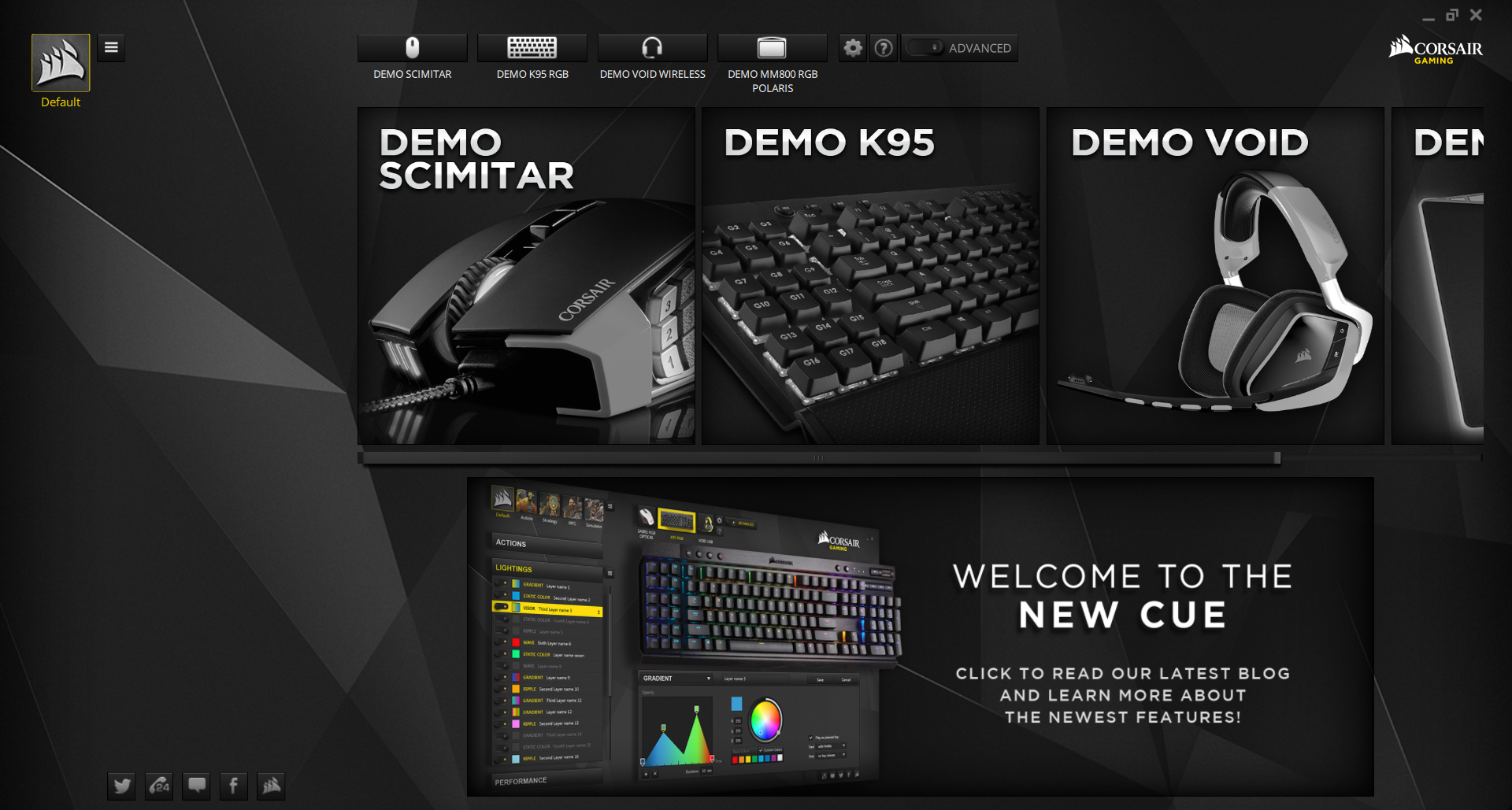
- CORSAIR UTILITY ENGINE VS CORE ICUE INSTALL
- CORSAIR UTILITY ENGINE VS CORE ICUE DRIVERS
- CORSAIR UTILITY ENGINE VS CORE ICUE UPDATE
- CORSAIR UTILITY ENGINE VS CORE ICUE DRIVER
CORSAIR UTILITY ENGINE VS CORE ICUE UPDATE
After a few days use, it also seemed to be better about updates-that is, until I was literally mid-sentence writing something when an update popped up and overtook my active window with a large box in the center of my screen. The software is cleaner and more focused, and has nice connectivity with Philips Hue for external RGB controls. Update: I spent some time with Razer's newer Synapse 3.0 software, and it's mostly an improvement. And the RGB mousepad that required a restart that we mentioned up top? You guessed it-Razer. I got the above message when I finished updating Synapse after plugging in a Razer mouse for the first time in a while. Worst of all, Razer has asked me to restart my computer a non-zero number of times, which frankly is too many. This is one of the most annoying aspects of Synapse, but other manufacturers have since followed in Razer’s footsteps.
CORSAIR UTILITY ENGINE VS CORE ICUE INSTALL
Razer was first to implement automatic notification to install when you plugged in a peripheral. Cloud-stored profiles are nice, especially if you change computers often, but I shouldn't have to have an internet connection in order to change my mouse's DPI.
CORSAIR UTILITY ENGINE VS CORE ICUE DRIVERS
It doesn't work with non-Razer products, though that's to be expected-the bigger issue is that you have to log in before you can download drivers or change any settings, and that login requires an internet connection. When it works, it's a robust-if a bit bloated-bit of software that effectively lets users control DPI, lighting, keybindings, and more on Razer peripherals.

Razer's Synapse software is a double-edged sword. The Adrenalin update has added profile support, which is good to see, and at least the drivers don't require you to log in for updates. Jarred saw that message even when not overclocking in some versions. Frequently, after booting up your computer, you'll get a message saying your WattMan settings didn't work properly and have been reset to defaults. This feature comes thanks to the addition of WattMan, and it sounds great, but until recently there was a huge flaw: no saved profiles. AMD Radeon SettingsĪMD's Radeon Settings provide some cool features, including the ability to overclock your GPU without the use of any external utilities.
CORSAIR UTILITY ENGINE VS CORE ICUE DRIVER
Unfortunately, getting Link to work properly on a new build sometimes requires jumping through extra hoops-there was a buggy build at one point that didn't install the device driver properly, so you couldn't even monitor your new H110i. Link also nicely lets you monitor non-Corsair hardware, a feature I wish carried over to mouse and keyboard control software. Similarly, the system-monitoring utility Corsair Link works as expected without the need for profiles or logging in. Like Logitech, Corsair's gaming software Corsair Utility Engine (CUE for short) lets me adjust lighting and DPI settings without requiring an account login or active internet connection. (It didn't require this in the past, so this is going the wrong direction in our view.) It's not the biggest hassle if you don't update too often, but for someone like me who is frequently testing fresh systems for review, that one additional hoop to jump through is frustrating indeed. It's relatively lightweight, but annoyingly makes you login before you can download any drivers. Nvidia GeForce drivers can be downloaded directly from, but the most streamlined way to keep your GPU up to date is by using Nvidia's GeForce Experience software. You can set up user profiles if you want, and most, if not all, Logitech peripherals have on-board memory to remember your settings, the lack of a cloud-stored profile means you'll need to set up new settings if you get a new mouse.

The software itself does everything I want it to, and does so without requiring an account/profile login or internet connection. Luckily, the annoyance largely ends there.

Logitech hits you with annoying notifications to install its Gaming Software whenever you plug in a Logitech G peripheral.


 0 kommentar(er)
0 kommentar(er)
